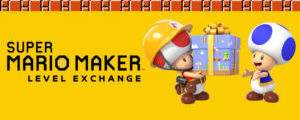On Friday, Nintendo hosted one of its Nintendo Switch 2 Experience events at CBS’s Televsion City in Los Angeles. We got a chance to go hands-on with multiple Nintendo Switch 2 titles and will be discussing them in detail. For this installment, we’ll be looking at Metroid Prime 4: Beyond.
Warning: Potential Story Spoilers Below
I’ll be honest: right up until I started playing the demo, I had my doubts about Metroid Prime 4: Beyond. Yeah, Retro Studios was directing it again, but a lot of people that worked on the original trilogy aren’t even there anymore. And the trailer… well, the trailer left something to be desired in my jaded heart. It looked the part of a Metroid Prime game, but I feared that the resemblance was only going to be skin-deep. After taking down the first boss by the end of the demo, I was suddenly a believer in Beyond.
The action picks up with Samus helping out the Galactic Federation during a pretty intense skirmish with enemy forces. Those forces are being led bythe bounty hunter Sylux, who first appeared in Metroid Prime Hunters on Nintendo DS and was last seen lurking around during one of the special endings in Metroid Prime 3: Corruption on Nintendo Wii. This drop straight into the action is actually not all that dissimilar to the start of Metroid Prime 3, although with considerably less preamble beyond a text scroll at the opening setting up the plot. It’s unclear if Metroid Prime 4 will have less voice acting compared to its predecessor, but I didn’t mind getting right into the thick of things.
In the demo, Samus is already rocking a (mostly) fully-powered Varia Suit. She can double-jump, fire missiles, use her Charge Beam and Morph Ball, and of course can scan things with her visor. The suite of attacks and abilities felt like slipping my hand into an old glove. Everything felt as snappy and precise as this series is known for. Playing with the Nintendo Switch 2 Joy-Con, we were told that we’d be experiencing the mouse controls for the game, but I don’t know that I ever did, honestly. I never dragged my Joy-Con around the pad on the table in front of me, so I unfortunately can’t speak to what difference the mouse controls make.
What I did experience, however, were the pointer controls thanks to the gyro inside of the Joy-Con. It was the one part of my playthrough that I wasn’t as keen on. Samus’s default controls in the demo are reminiscent of the Dual Stick setup in Metroid Prime Remastered, where movement is mapped to the left stick and aiming to the right. Here, however, when Samus locks onto an opponent, the controls shift into gyro mode. I found this jarring and unintuitive; if I’m going to move the control stick to aim at enemies, what sense does it make to then switch over into gyro controls once it’s time to start shooting?
I can understand how this might serve to up the challenge, as the lock-on can be seen as making things too easy during combat. The issue isn’t having to manually aim at the opponent while locked on, it’s that the controls go from stick to gyro. Again, it threw me off while I was playing, and while I eventually started to get used to it, it was definitely not my preferred way to play. Given Beyond will offer Nintendo Switch 2 Pro Controller support, I suspect that multiple control schemes will be available—fingers crossed. Still, even with that nitpick, everything handled with ease and I was zipping in and blowing up Space Pirates left and right.
This build running on Switch 2 really cast Beyond in a favorable light. It is a very pretty game. Colors are rich, character animations smooth, and the lighting gives everything this mesmerizing glow that I didn’t want to stop staring at. Beyond feels like a proper AAA title, something that’s dripping with quality from top to bottom. I was also a bit of a sucker for the attention to detail throughout the demo. The GF troopers could be seen jumping into large mech suits not unlike the ones from 2015’s oft-derided Metroid Prime: Federation Force on Nintendo 3DS.Between the mechs and the presence of Sylux, it was nice to see some continuity coming from the handheld entries in the series; it almost felt like a validation of those titles to see elements of them being pulled in for Beyond.
The boss battle at the end was a real highlight. A Metroid pops up out of nowhere and burrows itself inside of another creature. Bulbous growths form around the body of the creature, which serve as the weak points during battle. These bubbles alternate between vulnerable and impenetrable as the monster lets loose with a mix of physical and energy attacks. Evading these strikes took a mixture of being fleet of foot (jumping and dashing out of the way) and of mind (knowing when to slip into her Morph Ball form to roll beneath energy bursts). It was a perfectly balanced introductory battle that will keep newbies on their toes, while also helping veteran players shake the dust and rust off. Once the enemy was down, Sylux appeared for a brief fight, only to quickly be dispatched by Samus—but not before Sylux did something to seemingly activate the artifact that will likely grant Samus her new psychic powers.
Admittedly, there’s still plenty that could go wrong with Beyond. Samus’s psychic powers could be a total bust. The narrative could be bland and boring. The gameplay could end up feeling too much like a hollow ripoff of what came before. Yet, walking out of Television City, I kept thinking about how much of the Prime formula the team at Retro got right. There’s a reason the original trilogy is so beloved by fans. Games like those in the Metroid Prime series are legitimately special and don’t come along all the time. To think that Nintendo might have been able to “get the band back together” without all of the original members and make it work… it has me really pumped for Metroid Prime 4: Beyond. I think everyone else should be excited for it, too.




 ShareThis
ShareThis








